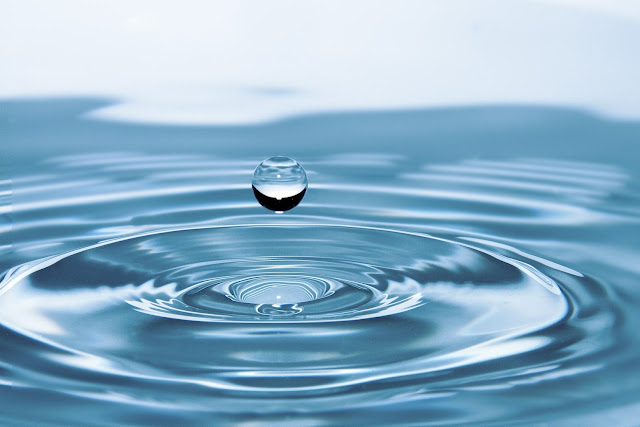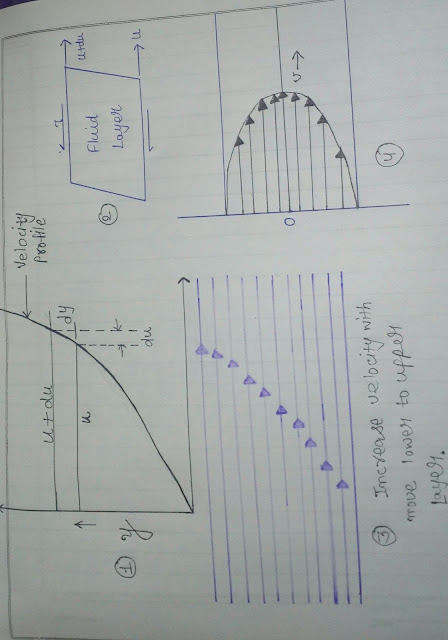Introduction of Water, impact of water pollution, uses of water and impurities in water.
WATER
1. Water is an important gift of nature for all the living things. As it is used in all types of metabolic activities and house hold works. It may be defined as “Clear, transparent, odourless and tasteless liquid. Chemically it is made up of two atoms of Hydrogen and one atom of Oxygen.
2. In day to day life, required potable water means should be tasteful, aesthetically pure and wholesome. But due to presence of some chemicals, biological and microbes it’s become unfit for drinking and for other uses.
3. In our earth only 0.1% water is available for our day to day use in the form of river, ponds, lakes and underground water. Rest 99.9% water is either in sea, oceans or in the form of Glacier.
4. Out of this 0.1% water, most of the sources are not fit for drinking purpose due to different types of contaminations/ pollutants.
5. Water pollution may be defined as “Any physical, Chemical or biological changes in water (either by natural or manmade sources). This water causes undesirable effects on living organisms because due to toxicity of water and reduction of dissolved Oxygen.
It covers more than 70% of the earth surface. Including the clouds (which are, of course, also water), It makes our entire planet look blue and white from space.
The earth’s supply of water is constantly being recycled. It is evaporated from the oceans by the sun and is given off by the forests. The vapour condenses into clouds, which rain out onto the land. The land water runs off into the lakes and rivers, which then run back to the seas, and the cycle is complete. The total amount of water on earth, in the form of oceans, lakes, rivers, clouds, polar ice, etc. is 1.5*1018 tons, occupying a total volume of 8.7 million cubic miles.
It is impossible to overstate the importance of water to almost every process on earth, from the life processes of the lowest bacteria to the shaping of continents. Water is the most familiar of all chemicals compounds known to humans. It is essential to all living things, plant and animal. We drink it, we wash with it, we play in it and we cook in it. In fact, we ourselves are more than half water.
Impact of water pollution:
2. In day to day life, required potable water means should be tasteful, aesthetically pure and wholesome. But due to presence of some chemicals, biological and microbes it’s become unfit for drinking and for other uses.
3. In our earth only 0.1% water is available for our day to day use in the form of river, ponds, lakes and underground water. Rest 99.9% water is either in sea, oceans or in the form of Glacier.
4. Out of this 0.1% water, most of the sources are not fit for drinking purpose due to different types of contaminations/ pollutants.
5. Water pollution may be defined as “Any physical, Chemical or biological changes in water (either by natural or manmade sources). This water causes undesirable effects on living organisms because due to toxicity of water and reduction of dissolved Oxygen.
It covers more than 70% of the earth surface. Including the clouds (which are, of course, also water), It makes our entire planet look blue and white from space.
The earth’s supply of water is constantly being recycled. It is evaporated from the oceans by the sun and is given off by the forests. The vapour condenses into clouds, which rain out onto the land. The land water runs off into the lakes and rivers, which then run back to the seas, and the cycle is complete. The total amount of water on earth, in the form of oceans, lakes, rivers, clouds, polar ice, etc. is 1.5*1018 tons, occupying a total volume of 8.7 million cubic miles.
It is impossible to overstate the importance of water to almost every process on earth, from the life processes of the lowest bacteria to the shaping of continents. Water is the most familiar of all chemicals compounds known to humans. It is essential to all living things, plant and animal. We drink it, we wash with it, we play in it and we cook in it. In fact, we ourselves are more than half water.
Impact of water pollution:
1 .Water contamination causes different types of diseases like- T.B., Cholera etc.
2. Mosquitoes that cause Filariasis, Malaria etc. mainly originates from polluted water.
3. Sea water pollution is mainly responsible for the death of large number of fishes and aquatic vegetation.
4. Petroleum products released in water causes cancer and other skin problems.
5. Algal blooms and Eutrophication causes Methaemolobinemia; kill fresh water organisms and unfit for drinking, irrigation and industrial uses.
2. Mosquitoes that cause Filariasis, Malaria etc. mainly originates from polluted water.
3. Sea water pollution is mainly responsible for the death of large number of fishes and aquatic vegetation.
4. Petroleum products released in water causes cancer and other skin problems.
5. Algal blooms and Eutrophication causes Methaemolobinemia; kill fresh water organisms and unfit for drinking, irrigation and industrial uses.
6. Water pollution decrease solubility of oxygen in water and disrupts aquatic ecosystems.
7. Due to use of fertilizers and pesticides causes “Bio magnifications”.
8. Thermal pollution is mainly responsible for causing harmful effects in aquatic plants and animals
7. Due to use of fertilizers and pesticides causes “Bio magnifications”.
8. Thermal pollution is mainly responsible for causing harmful effects in aquatic plants and animals
Use of water:
1. Water serves as a lubricant, forms the base for saliva, forms the fluids that surround the joints.
2. Water regulates the body temperature, as the cooling and heating is distributed through perspiration, Regulates metabolism.
3. Water helps to alleviate constipation by moving food through the intestinal tract and thereby eliminating waste- the best detoxifying agent.
4. In addition to the daily maintenance of our bodies, water also plays a key role in the prevention of disease.
1. Water serves as a lubricant, forms the base for saliva, forms the fluids that surround the joints.
2. Water regulates the body temperature, as the cooling and heating is distributed through perspiration, Regulates metabolism.
3. Water helps to alleviate constipation by moving food through the intestinal tract and thereby eliminating waste- the best detoxifying agent.
4. In addition to the daily maintenance of our bodies, water also plays a key role in the prevention of disease.
1. Impurities in water:
Chemically, the pure water is the one which contains two parts of hydrogen and one part of oxygen by volume; but in nature, no water is 100% pure. During precipitation the rainwater absorbs many impurities like dust, gases, etc., present in the atmosphere. When it falls on the earth surface and takes the form of surface water, it picks up many impurities like silt, clay, organic matter, nitrates, sulphates, phosphates, etc., depending upon the topography and vegetation of the catchment area. A part of this surface water, which infiltrates into the ground, is comparatively free from these impurities, but it may contain dissolved impurities like iron, magnesium, chloride, calcium, etc. These impurities in water may be classified as:
1. Suspended impurities
2. Colloidal impurities
3. Dissolved impurities.
Chemically, the pure water is the one which contains two parts of hydrogen and one part of oxygen by volume; but in nature, no water is 100% pure. During precipitation the rainwater absorbs many impurities like dust, gases, etc., present in the atmosphere. When it falls on the earth surface and takes the form of surface water, it picks up many impurities like silt, clay, organic matter, nitrates, sulphates, phosphates, etc., depending upon the topography and vegetation of the catchment area. A part of this surface water, which infiltrates into the ground, is comparatively free from these impurities, but it may contain dissolved impurities like iron, magnesium, chloride, calcium, etc. These impurities in water may be classified as:
1. Suspended impurities
2. Colloidal impurities
3. Dissolved impurities.
1. Suspended impurities present in natural waters are sand, clay, silt, organic matter like fats, remnants of plants, microorganisms, algae, etc. The greatest concentrations of suspended impurities in surface waters is during floods. Suspended impurities can be removed by sedimentation because of their comparatively large size.
2. Colloidal impurities in natural water are of both organic and inorganic (mineral) origin. These are finely divided charged particles and do not settle down easily. Colloidal impurities impart turbidity to water.
3. Dissolved impurities in natural water may be gases like oxygen, carbon dioxide, hydrogen sulphide, ammonia etc., and dissolved minerals like Ca++, Mg++ etc. These mineral constituents differ greatly in concentration in different waters. Moreover, the presence of some minerals in small quantity gives good taste to water or are useful.
2. Colloidal impurities in natural water are of both organic and inorganic (mineral) origin. These are finely divided charged particles and do not settle down easily. Colloidal impurities impart turbidity to water.
3. Dissolved impurities in natural water may be gases like oxygen, carbon dioxide, hydrogen sulphide, ammonia etc., and dissolved minerals like Ca++, Mg++ etc. These mineral constituents differ greatly in concentration in different waters. Moreover, the presence of some minerals in small quantity gives good taste to water or are useful.
The water quality parameters or characteristics, for which analysis/examination are carried out, fall into the following three broad categories:
1. Physical characteristics
2. Chemical characteristics
3. Biological characteristics
1. Physical characteristics
2. Chemical characteristics
3. Biological characteristics
1. Physical characteristics (temperature, colour, turbidity, taste, odour etc.);
2. Chemical characteristics are (pH, Hardness, TDS, Chloride, Sulphate, Fluoride, Nitrate, Iron, Manganese etc.);
2. Chemical characteristics are (pH, Hardness, TDS, Chloride, Sulphate, Fluoride, Nitrate, Iron, Manganese etc.);
3.Bacteriological characteristics (Coli form and faecal coliform group of bacteria) and biological characteristics (Algae and other microorganisms).
WATER ANALYSIS:
Most of the impurities in water are microscopic in nature, and can be determined in the laboratory by water analysis. Water analysis is carried out, both for raw water as well as treated water. The analysis of water (raw and purified) is essential for the following reasons:
Analysis of raw water helps us in selecting the most suitable source of water supply among the he various sources available.
Analysis of raw water helps us in determining the outline/processes of water purification and the size of the units.
Analysis of treated water is essential to ascertain whether the required standards of treated water has reached or not.
It helps in knowing the relative efficiencies of various units of the treatment.
The analysis also helps in determining the optium-dose of chemicals required in the treatments.
It is a relative term used to convey the idea of the potential usability of ground or surface water for a particular use.
Most of the impurities in water are microscopic in nature, and can be determined in the laboratory by water analysis. Water analysis is carried out, both for raw water as well as treated water. The analysis of water (raw and purified) is essential for the following reasons:
Analysis of raw water helps us in selecting the most suitable source of water supply among the he various sources available.
Analysis of raw water helps us in determining the outline/processes of water purification and the size of the units.
Analysis of treated water is essential to ascertain whether the required standards of treated water has reached or not.
It helps in knowing the relative efficiencies of various units of the treatment.
The analysis also helps in determining the optium-dose of chemicals required in the treatments.
It is a relative term used to convey the idea of the potential usability of ground or surface water for a particular use.




Comments
Post a Comment